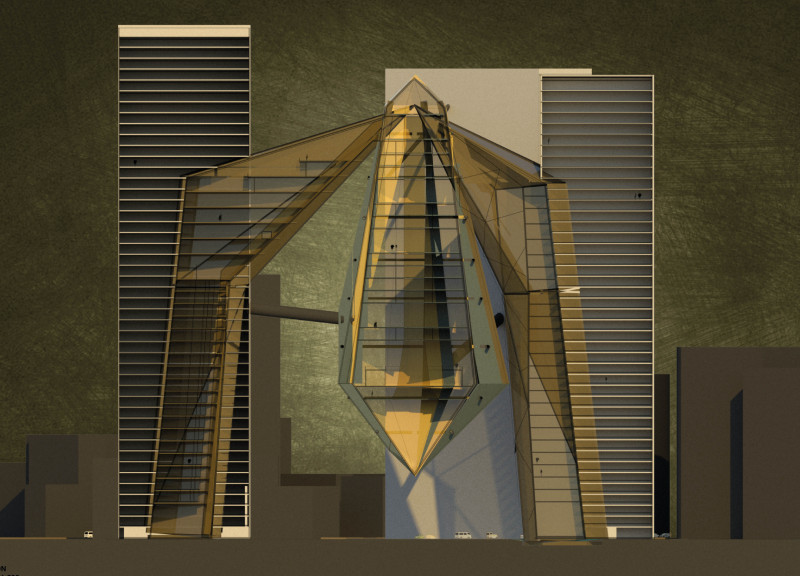5 key facts about this project
The design focuses on the challenges of urban living in Tokyo, where the growing population demands new solutions for high-rise buildings. The Parasite tower offers a unique approach by fitting new structures within existing skyscrapers. This method allows for the efficient use of vertical space while reducing pressure on ground-level infrastructure.
Conceptual Framework
-
The Parasite tower relies on nearby high-rise buildings for its support instead of traditional foundations. This innovative idea makes the best use of limited urban space. By stacking multiple functions vertically, it answers the needs of modern city life. The tower becomes an extension of existing buildings, adding to the architectural landscape.
Structural Integration
-
A central idea of the design is its integration with established high-rise structures. By merging with existing buildings, the new tower uses their strength to rise. This relationship allows for a mixed-use environment without taking up more ground space. The design encourages a lively urban atmosphere with diverse activities stacked in a single framework.
Circulation and Mobility
-
To improve movement within the city, the Parasite tower includes pathways designed as tubes that connect to three supporting skyscrapers. This design choice helps people move between buildings easily, reducing crowding on the streets below. By focusing on how people navigate through these towers, the project supports better accessibility and flow in a busy urban area.
Visual Perspective
-
The tower’s upside-down orientation rethinks traditional high-rise design. This unusual form changes the view of the city skyline and provides a fresh perspective of the busy streets below. It fosters new ways for people to experience the urban environment, making them engage with the city in an interesting way.
The Parasite tower stands out through its thoughtful approach and integration with Tokyo's urban setting. It shows how innovative design can address the challenges of city living while enhancing the overall experience for its occupants.






















































